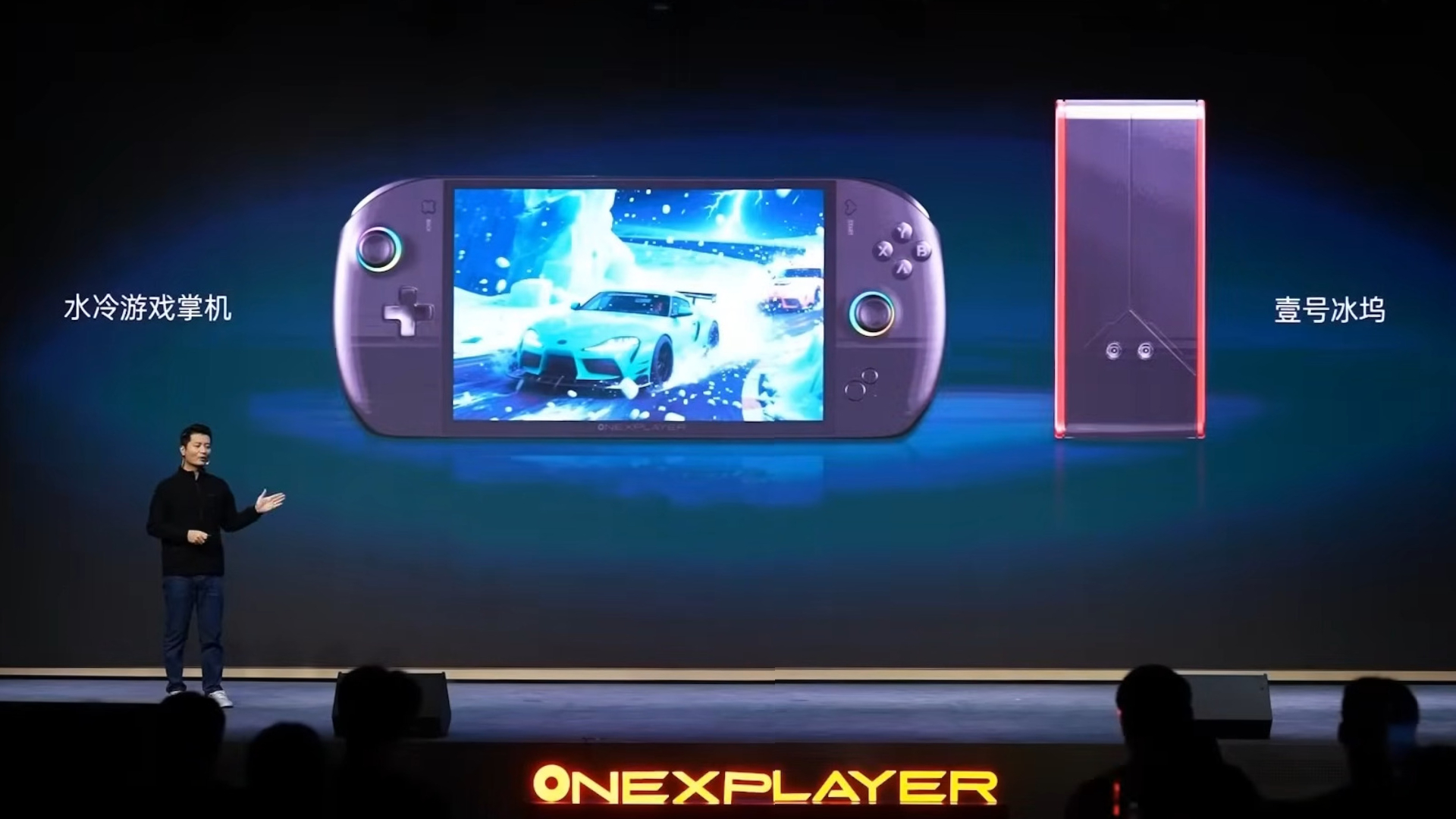
When is a gaming handheld not a gaming handheld?
I would argue that a gaming handheld stops being so when you need to attach various external devices to maximize its performance. This is the case with the OneXPlayer OneXFly Apex powered by Strix Halo.
On paper, this device seems impressive with its slim 8-inch design housing an AMD Ryzen AI Max 395 APU. However, as found in previous reviews, creating a portable device featuring such high-caliber hardware requires certain compromises.
In this instance, the OneXFly Apex uses a swappable 85 Wh external battery pack, echoing the GPD Win 5, another portable device reliant on an extra battery. Moreover, it claims to be the first to incorporate external liquid cooling, utilizing connectors and tubes attached to a cooling tower.
While the system claims to manage an 80 W TDP in handheld mode, it can extend up to 120 W with the cooling solution. The cooling is optional, yet skimping on it may hinder performance significantly.
This level of enhancement could potentially position the Apex as the most powerful gaming handheld to date, likely designed for high performance rather than convenience. Most notably, the device features a bunch of cables and hoses, raising concerns about its true portability.
Charging for this power doesn’t come cheap, starting at around $1,200 for the 32 GB version without the cooling attachment. This pricing reflects the Chinese market, suggesting higher retail prices when it reaches the West.
Ultimately, while its performance is likely to be remarkable, I find myself questioning the practicality of a handheld that demands so many attachments. It’s a significant leap in tech, but does it truly embody what a handheld gaming device should aspire to be?
